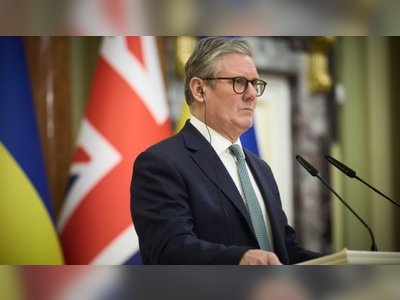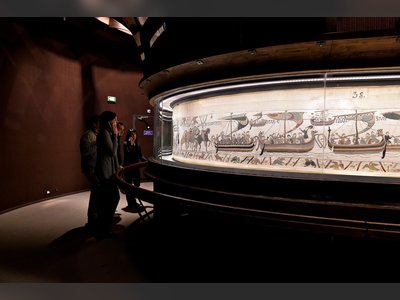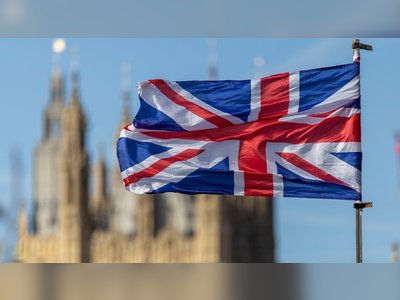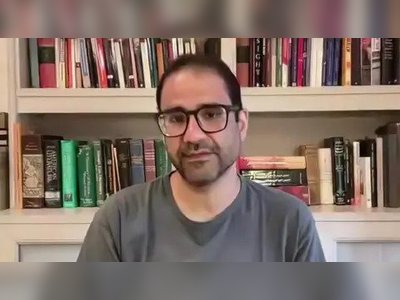Secret UK Files Reveal Confessions of Cambridge Five Spies
Declassified MI5 documents shed light on the confessions of notorious double agents Kim Philby and Anthony Blunt, detailing their espionage activities for the Soviet Union.
Top secret MI5 files, made public for the first time on Tuesday, reveal chilling confessions from some of Britain's most infamous double agents, including Kim Philby and Anthony Blunt.
The newly declassified documents, published by the National Archives, provide an unprecedented look into the 'Cambridge Five,' a group of former Cambridge University students who secretly passed sensitive British intelligence to the Soviet Union from the 1930s through the 1950s.
Among the newly released papers is a six-page confession from 1963 by Philby, a senior MI6 officer and leader of the group, in which he finally admits his treachery after years of suspicion.
Philby, whose code name was 'PEACH,' recounts his recruitment by Soviet intelligence in 1934, initiated by a man named 'Otto' at the behest of Philby’s Communist Party-supporting wife.
The confession reveals how Philby not only became a key mole in MI6 but also helped recruit fellow spies Guy Burgess and Donald Maclean.
He also discusses tipping off Maclean, who was at risk of being exposed in 1951, leading to the duo’s dramatic defection to the Soviet Union.
Philby himself fled to Moscow after his confession, where he lived until his death in 1988. He was honored posthumously with a plaque at the headquarters of Russia’s foreign intelligence service in 2010.
The release also includes documents related to Anthony Blunt, another member of the Cambridge Five.
Blunt, who served as an art adviser to Queen Elizabeth II, confessed his espionage activities in a 1964 MI5 interview.
His admission was secured in exchange for immunity from prosecution, and his involvement in the spy ring remained a closely guarded secret until it was publicly revealed in 1979. In a 1973 note, it was revealed that Queen Elizabeth had been informed of Blunt's actions, with her private secretary reporting her reaction as 'calm and without surprise.'
John Cairncross, the final member of the spy ring to be publicly identified, admitted to espionage activities in a 1964 interview in the United States.
His revelations were corroborated by a telegram from Washington detailing his recruitment by Soviet intelligence as early as 1936.
The files will be part of an exhibition at the National Archives titled 'MI5: Official Secrets,' offering a rare glimpse into the work of Britain’s domestic intelligence agency.
The exhibition will feature case files, photographs, and equipment used by spies throughout MI5’s 115-year history.
Current MI5 chief, Ken McCallum, highlighted the agency's commitment to transparency, stating, 'While much of our work must remain secret, this exhibition reflects our ongoing commitment to being open wherever we can.'
Additional documents released also provide insight into MI5's surveillance operations, including details about actor Dirk Bogarde, who was believed to have been approached by Russian intelligence services, although the suspicion was later dismissed.
One booklet, used by MI5 from 1939 to 1951, offers practical tips on effective surveillance, humorously advising against the use of facial disguises, such as fake mustaches, which it described as 'easily detected.'
These documents mark an important milestone in the ongoing declassification of Britain’s intelligence history, shedding new light on the inner workings of espionage and the lasting impact of the Cambridge Five on the intelligence community.
The newly declassified documents, published by the National Archives, provide an unprecedented look into the 'Cambridge Five,' a group of former Cambridge University students who secretly passed sensitive British intelligence to the Soviet Union from the 1930s through the 1950s.
Among the newly released papers is a six-page confession from 1963 by Philby, a senior MI6 officer and leader of the group, in which he finally admits his treachery after years of suspicion.
Philby, whose code name was 'PEACH,' recounts his recruitment by Soviet intelligence in 1934, initiated by a man named 'Otto' at the behest of Philby’s Communist Party-supporting wife.
The confession reveals how Philby not only became a key mole in MI6 but also helped recruit fellow spies Guy Burgess and Donald Maclean.
He also discusses tipping off Maclean, who was at risk of being exposed in 1951, leading to the duo’s dramatic defection to the Soviet Union.
Philby himself fled to Moscow after his confession, where he lived until his death in 1988. He was honored posthumously with a plaque at the headquarters of Russia’s foreign intelligence service in 2010.
The release also includes documents related to Anthony Blunt, another member of the Cambridge Five.
Blunt, who served as an art adviser to Queen Elizabeth II, confessed his espionage activities in a 1964 MI5 interview.
His admission was secured in exchange for immunity from prosecution, and his involvement in the spy ring remained a closely guarded secret until it was publicly revealed in 1979. In a 1973 note, it was revealed that Queen Elizabeth had been informed of Blunt's actions, with her private secretary reporting her reaction as 'calm and without surprise.'
John Cairncross, the final member of the spy ring to be publicly identified, admitted to espionage activities in a 1964 interview in the United States.
His revelations were corroborated by a telegram from Washington detailing his recruitment by Soviet intelligence as early as 1936.
The files will be part of an exhibition at the National Archives titled 'MI5: Official Secrets,' offering a rare glimpse into the work of Britain’s domestic intelligence agency.
The exhibition will feature case files, photographs, and equipment used by spies throughout MI5’s 115-year history.
Current MI5 chief, Ken McCallum, highlighted the agency's commitment to transparency, stating, 'While much of our work must remain secret, this exhibition reflects our ongoing commitment to being open wherever we can.'
Additional documents released also provide insight into MI5's surveillance operations, including details about actor Dirk Bogarde, who was believed to have been approached by Russian intelligence services, although the suspicion was later dismissed.
One booklet, used by MI5 from 1939 to 1951, offers practical tips on effective surveillance, humorously advising against the use of facial disguises, such as fake mustaches, which it described as 'easily detected.'
These documents mark an important milestone in the ongoing declassification of Britain’s intelligence history, shedding new light on the inner workings of espionage and the lasting impact of the Cambridge Five on the intelligence community.















